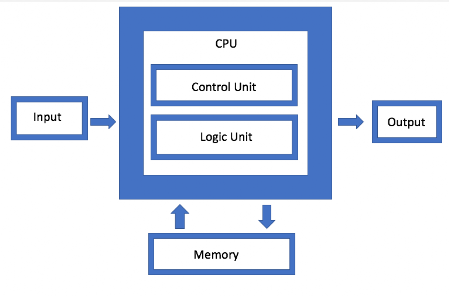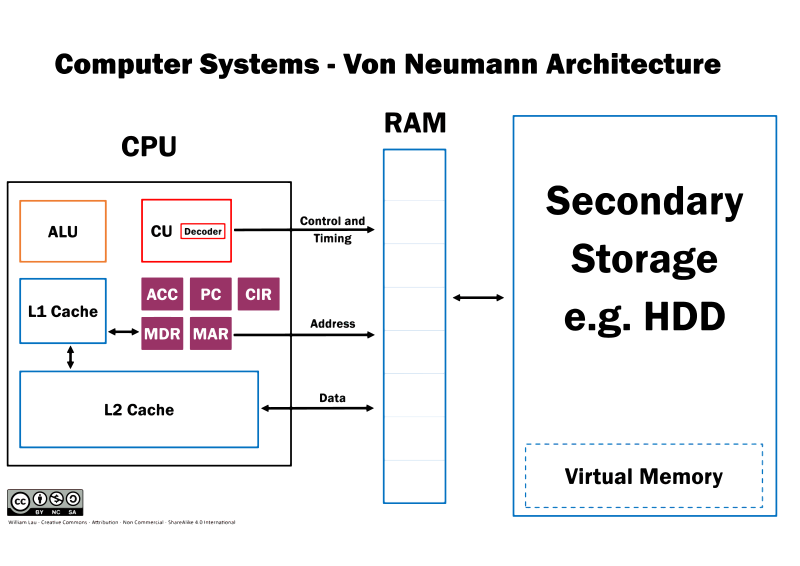Von Neumann Architecture

Von Neumann architecture was first published by John von Neumann in 1945. It is a basic model of how a computer works. It has a Control Unit, Arithmetic and Logic Unit (ALU), Memory Unit, Registers and Inputs /Outputs.
The architecture model is based on the stored-program computer concept, where both instruction data and program data are stored in the same memory. This design is still used in most computers produced today.

The first image (blue one) shows the basic architecture. The second has ignored the input and output section and zoomed in on the middle section - the CPU and Memory bit.
In the second diagram CU stands for Control Unit and ALU stands for arithmetic Logic Unit. There are different types of memory: Registers (ACC, PC etc in the purple boxes), The Cache, Main Memory (RAM) and Secondary Storage (The hard drive etc).
You can find out more on each on their pages. There is a comparison of the role of the different memory types on the Memory Summary page.
